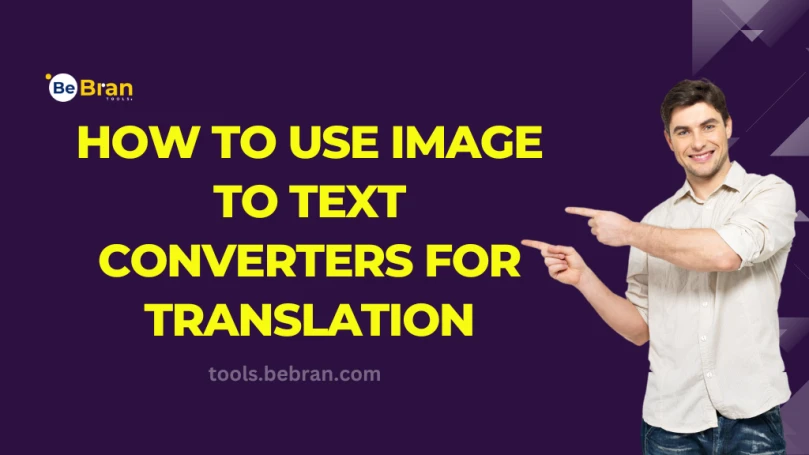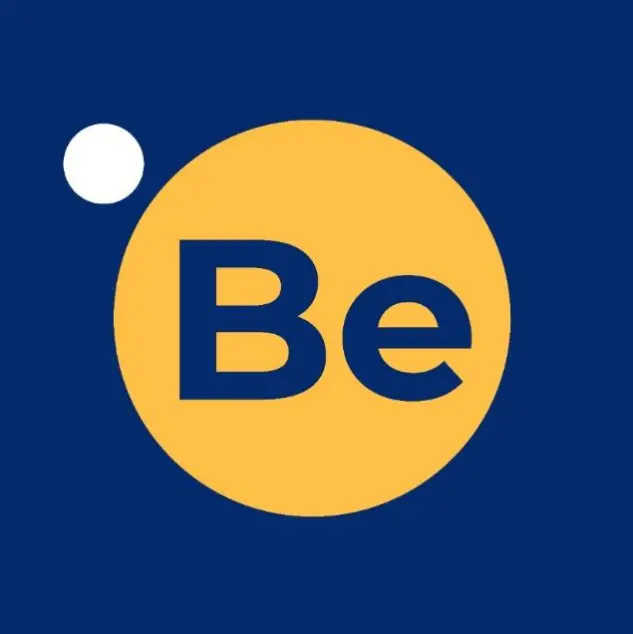
How to Use Image to Text Converters for Translation
In today’s interconnected world, translation has become a crucial part of our daily lives. Whether you’re a student studying a foreign language, a professional working with multilingual clients, or someone traveling abroad, translating text from images can be a lifesaver. This is where image to text converters step in, bridging the gap between visual content and editable text that can be easily translated into different languages.
In this blog, we’ll explore how image to text converters can make translation more efficient, discuss the best practices for using them, and introduce some of the best tools available for this purpose.
What Is an Image to Text Converter?
An image to text converter is a tool that extracts text from images, scanned documents, or handwritten notes and turns it into editable and searchable content. These tools use Optical Character Recognition (OCR) technology to recognize and convert text accurately.
Why Use Image to Text Converters for Translation?
Translating text directly from an image can be challenging, especially when dealing with different fonts, handwriting, or poor image quality. Here’s why an image to text converter is essential:
- Extract Text Efficiently: Quickly convert text from images into editable formats without manual typing.
- Enable Translation: Once the text is editable, you can use any translation tool or service to convert it into another language.
- Save Time and Effort: Automate the process, especially for large amounts of text.
- Improve Accuracy: Minimize errors that often occur during manual transcription.
- Access Multilingual Resources: Use OCR tools to process text in multiple languages, making foreign documents accessible.
Practical Applications of Image to Text Converters for Translation
1. Translating Printed Documents
From brochures to textbooks, many printed materials are only available in one language. By converting the text into an editable format, you can use a translation tool to understand and repurpose the content.
2. Reading Foreign Signs and Labels
Travelers often encounter signs, menus, or labels in unfamiliar languages. Snap a picture, use an image to text converter, and translate the text instantly.
3. Studying Foreign Languages
Students can convert and translate notes, exercises, or excerpts from textbooks written in a foreign language, making it easier to learn and practice.
4. Professional Multilingual Projects
Businesses and professionals working with international clients can use these tools to translate contracts, proposals, or presentations from one language to another.
5. Digitizing and Translating Historical Documents
Researchers and historians often work with scanned archives or historical documents. OCR tools help digitize the text, which can then be translated for wider access and understanding.
Step-by-Step Guide: Using Image to Text Converters for Translation
Step 1: Choose a Reliable Image to Text Converter
Start with a trusted tool like BeBran’s Free Image to Text Converter for accurate and efficient text extraction. Look for features like multilingual support, ease of use, and secure file handling.
Step 2: Upload Your Image
Take a clear picture of the document, sign, or label you want to translate. Upload it to the image to text converter.
Step 3: Extract the Text
Use the tool’s OCR capabilities to extract the text. Ensure the output is accurate and complete.
Step 4: Translate the Text
Once the text is editable, copy and paste it into a translation tool like Google Translate, DeepL, or Microsoft Translator. These tools support a wide range of languages and offer quick results.
Step 5: Edit and Format the Translation
Review the translated text for accuracy and make necessary adjustments. If it’s for professional use, consider having it reviewed by a human translator.
Step 6: Save and Use the Translated Text
Save the translated text in your preferred format, whether it’s a Word document, PDF, or email.
Free Tools: Free Organize PDF Tool Online | Free Watermark PDF Tool Online | Free Rewrite Article Tool Online
Tools for Converting Images to Text for Translation
1. BeBran’s Free Image to Text Converter
At BeBran, we prioritize accuracy, simplicity, and user satisfaction. Our Free Image to Text Converter tool is designed to help you extract text from images with minimal effort.

- Features:
- Advanced OCR for precise text recognition.
- Multilingual support for extracting text in various languages.
- User-friendly interface with drag-and-drop functionality.
- Secure file handling, with automatic deletion after processing.
- Best For: Students, travelers, and professionals needing an easy-to-use tool for multilingual text extraction.
2. Google Lens
Google Lens is a versatile app that allows users to identify and extract text from images directly on their smartphones.
- Features:
- Instant text extraction and translation within the app.
- Multilingual support for reading and translating foreign text.
- Best For: Quick translations on the go, especially for signs and menus.
3. Adobe Scan
Adobe Scan is a powerful tool for scanning documents and extracting text. It integrates Smoothly with Adobe Acrobat for editing and translation.
- Features:
- High-quality OCR for complex layouts.
- Integration with other Adobe tools for editing and translating.
- Best For: Professionals handling scanned business documents.
4. Microsoft OneNote
Microsoft OneNote offers a built-in OCR feature that extracts text from images or handwritten notes.
- Features:
- Extract text from images directly within your notes.
- Supports exporting text for translation into other tools.
- Best For: Students and professionals using Microsoft tools for their workflow.
5. iTranslate
iTranslate offers an image to text conversion feature paired with robust translation capabilities.
- Features:
- OCR text extraction and real-time translation.
- Supports over 100 languages.
- Best For: Users needing an all-in-one solution for text conversion and translation.
Tips for Accurate Text Conversion and Translation
- Use High-Quality Images: Ensure the image is clear, well-lit, and free of shadows or blurs.
- Check OCR Output: Always review the extracted text for errors or formatting issues before translation.
- Choose the Right Translation Tool: Use reputable translation platforms like DeepL or Google Translate for better accuracy.
- Be Mindful of Context: Machine translation might miss nuances, so review the translated text carefully.
- Preserve Original Formatting: If formatting is important, use tools that retain layouts and fonts during conversion.
Real-Life Example: How BeBran Helped a Traveler
Background
- Sarah, a solo traveler exploring Japan, often encountered signs and menus she couldn’t understand.
Challenge
- She needed a quick and reliable way to translate Japanese text into English while navigating cities.
Solution
- Sarah used BeBran’s Free Image to Text Converter to extract Japanese text from photos and then translated it using Google Translate.
Results
- She avoided language barriers and enjoyed her trip without stress.
- Quick translations helped her communicate effectively and make informed decisions.
Advantages of Using Image to Text Converters for Translation
- Time-Saving: Automates text extraction and translation, reducing manual effort.
- Accessible: Makes foreign-language resources and documents more approachable.
- Cost-Effective: Free tools like BeBran provide powerful functionality without financial strain.
- Portable: Mobile-friendly tools allow you to translate on the go.
- Multilingual Support: Many converters handle multiple languages, expanding their usability.
Final Thoughts
Image to text converters paired with translation tools are game-changers in today’s globalized world. Whether you’re traveling, studying, or working on international projects, these tools streamline the process of understanding and repurposing foreign-language content.
At BeBran, we’re proud to offer a free and easy-to-use Free Image to Text Converter that helps users break language barriers with accuracy and simplicity. Combine it with your favorite translation tool and see how it transforms the way you handle multilingual tasks.
Start using these tools today, and let them make your translations faster, easier, and more efficient!
Explore More: Keyword Research for Domain Names: Finding the Perfect Match | The Importance of Accuracy in PDF to Word Conversion
Frequently Asked Questions
1. What is an image to text converter?
An image to text converter extracts text from images and converts it into an editable format using OCR technology.
2. How can I use an image to text converter for translation?
First, use the converter to extract the text from the image. Then, copy the text into a translation tool or software to get the translated version.
3. Are there any image to text converters with built-in translation?
Yes, some advanced tools combine OCR with translation features, allowing you to extract and translate text directly in one step.
4. Do these tools support multiple languages for text extraction?
Many converters support text extraction in multiple languages, ensuring that you can process images with text in different scripts.
5. How can I ensure accurate translations from extracted text?
Use a high-quality image for extraction to improve OCR accuracy, and choose a reliable translation tool for precise translations.
6. Can I extract and translate handwritten text?
Some advanced tools support handwritten text, but the accuracy depends on the handwriting clarity and the tool’s OCR technology.
7. Are free image to text converters sufficient for translation tasks?
Yes, free tools work well for basic tasks, but for better accuracy and advanced features, you may need a paid option.
8. Can I use these tools on mobile devices for quick translations?
Yes, many image to text converters and translation apps are mobile-friendly, making them convenient for on-the-go use.
9. Are there tools that let me extract and translate text in one app?
Yes, some tools integrate OCR and translation, providing a smooth workflow for extracting and translating text from images.
10. What types of images can be used for text extraction and translation?
Most tools support images in JPG, PNG, and PDF formats, as long as the text is clear and readable.



